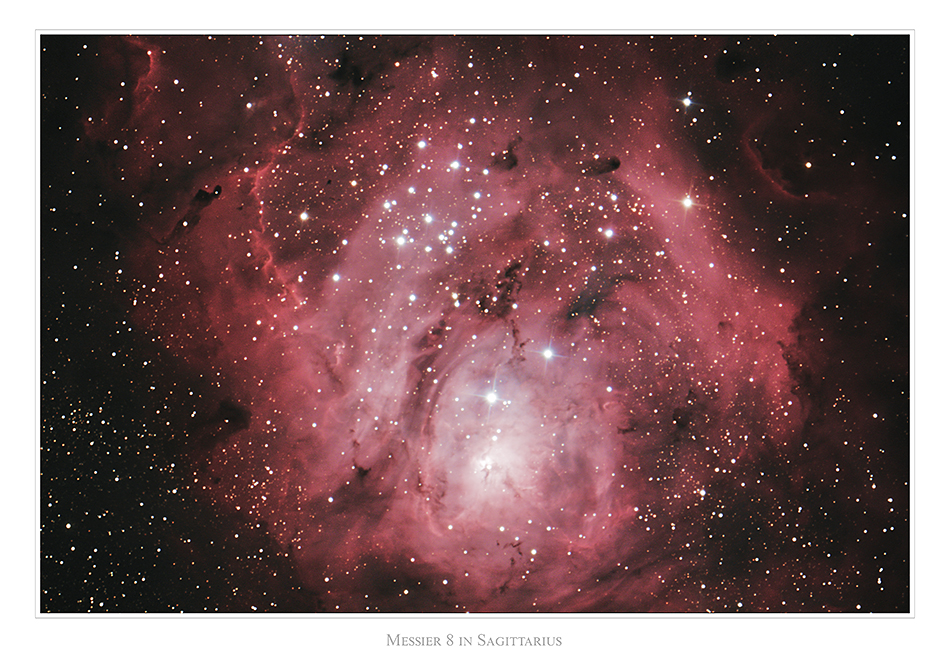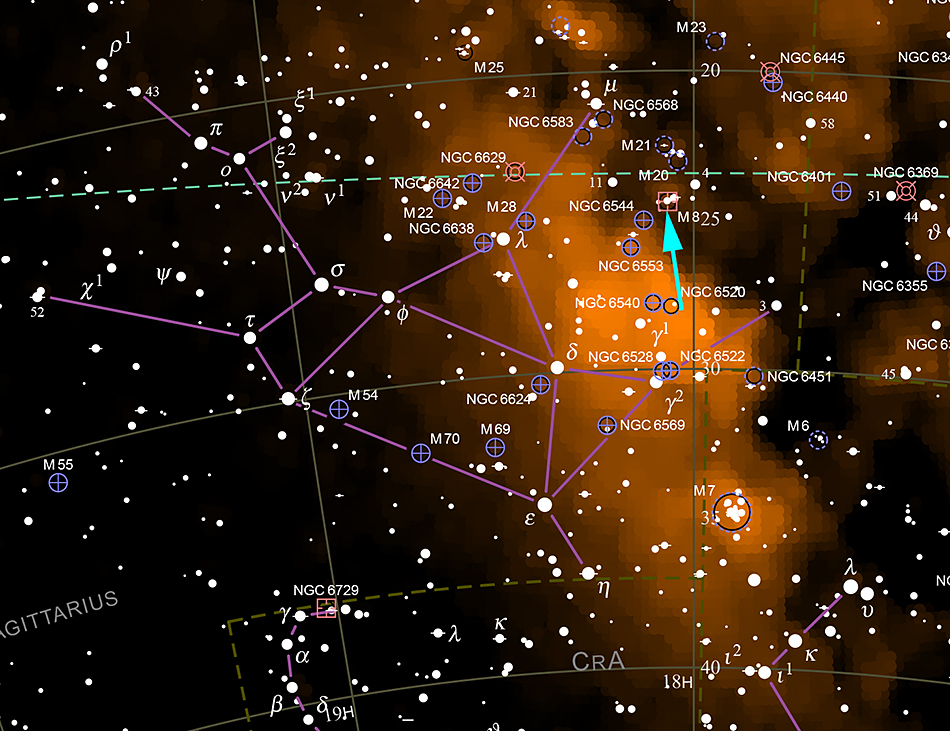The emission and reflection nebula Messier 8 (NGC 6523, Lagoon Nebula) in the constellation Sagittarius,
photographed on July 13, 2018. Messier 8 is approximately 5'200 light-years from Earth, measures about 55 x 20 light-years and was discovered by Italian astronomer
Giovanni Battista Hodierna in 1654 and independently re-discovered by English astronomer John Flamsteed in 1680. The Lagoon Nebula is a large star-forming region
and contains dark protostellar clouds, so-called globules. Within the nebula is the young open star cluster NGC 6530. Its stars were formed by material of the
Lagoon Nebula and now ionize the surrounding gas (source: Wikipedia).
Twenty-three exposures of 3 minutes at ISO 800 were stacked with no dark frame subtraction with Deep Sky Stacker
(resulting in a 1 h 9 min exposure) and further processed in Photoshop. For the image, an Artesky 550 mm flat field generator was used to reduce vignetting caused
by the camera and the telescope. The flat field images drastically reduced the processing time.
Unfortunately, the Lagoon Nebula was already low on the horizon
and thin clouds reduced the sky transparency. Minutes after the last image, Messier 8 disappeared on the horizon.
|
Equipment: Canon EOS 450D Baader modified camera, TeleVue Paracorr Type II coma corrector,
16" f/4.5 "Ninja" dobsonian telescope riding on a dual-axis Tom Osypowski equatorial platform,
Lacerta MGEN autoguider, Lacerta off axis system (field of view comparison:
image of the moon with the same equipment).
|










